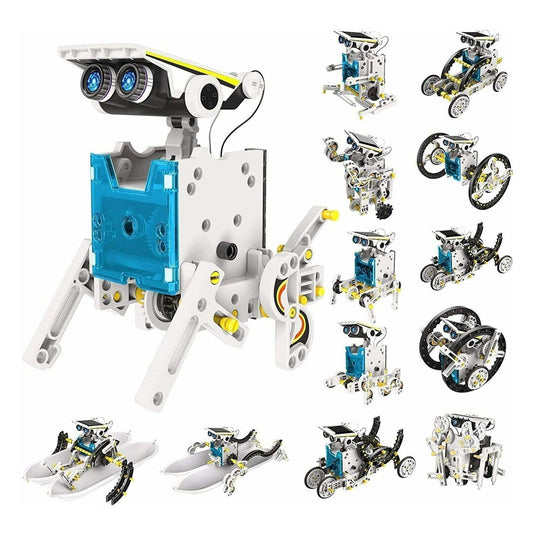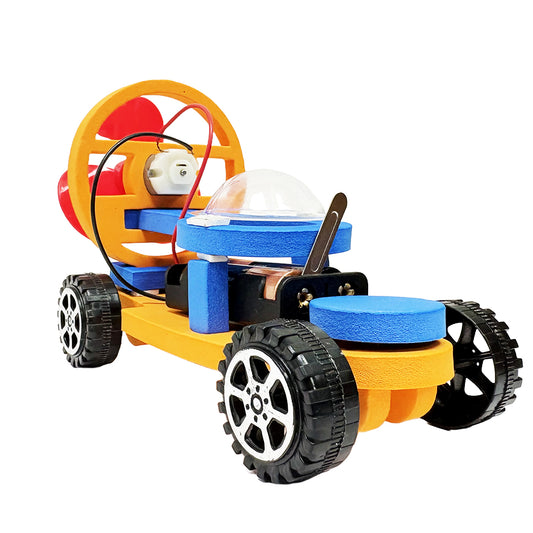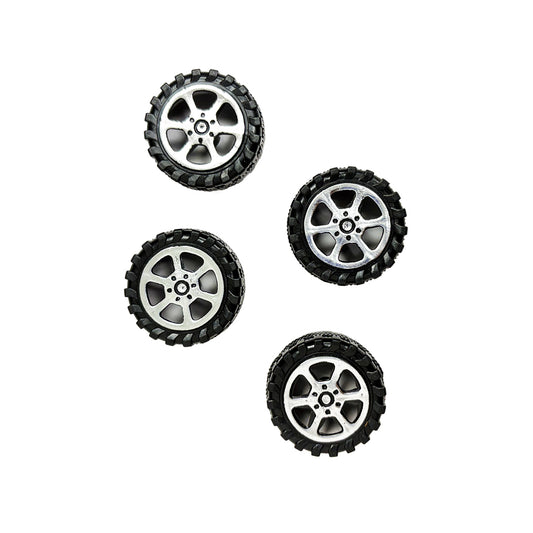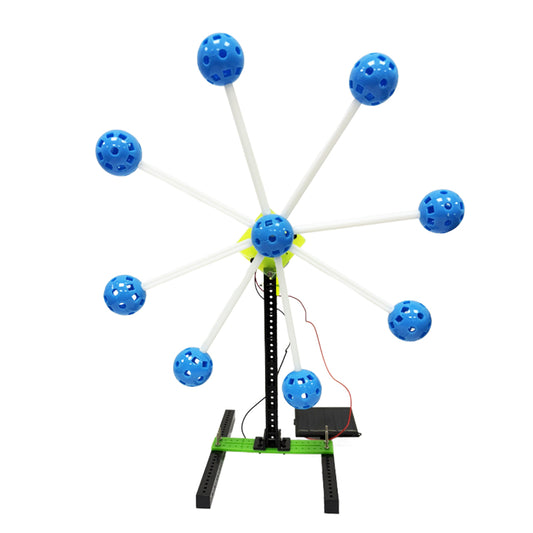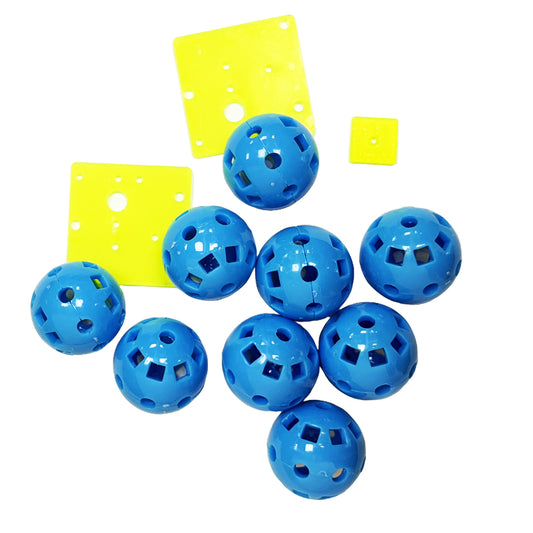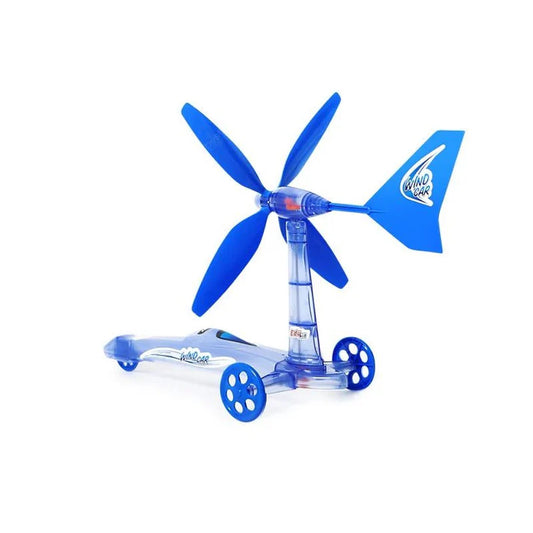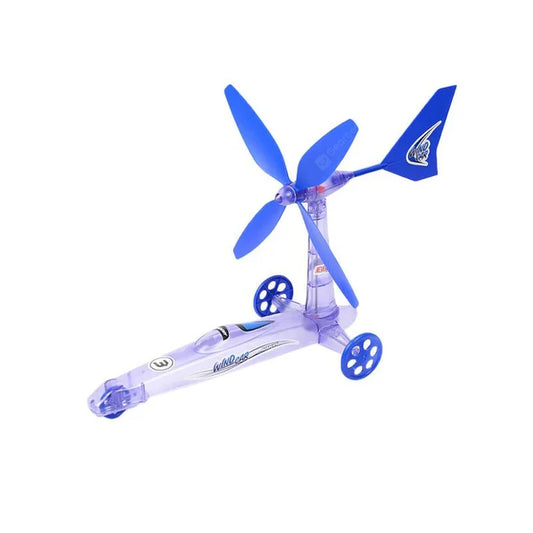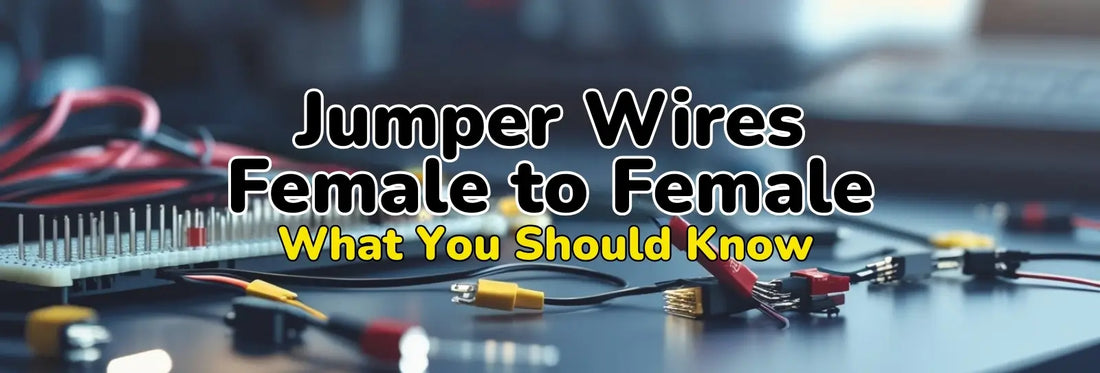
Jumper Wires Female to Female: What You Should Know
IEM RoboticsTable Of Content
- What are Female Jumper Wires?
- Why Use Jumper Wires Female to Female?
- Types of Female-to-Female Jumper Wires
- How to Connect Two Female Jumper Wires?
- Applications of Female to Female Jumper Wires
- How to Choose the Right Jumper Cable Female?
- Conclusion
Jumper wires are essential in electronics because they are vital to temporary or semi-permanent circuit connections. They are helpful for rapid prototyping and enable users to test circuit designs without soldering. Among the available types, jumper wires, female to female, are beneficial for linking male header pins on circuit boards, breadboards, and microcontrollers.
Whether a beginner experimenting with Arduino and Raspberry Pi or a professional working on advanced robotics, you can use female to female jumper wires to connect various components.
Their versatility, reusability, and compatibility with electronic devices make them essential for learning and practical applications, instilling confidence in your circuitry skills.
This article will explore the importance of jumper wires female to female. You will also get to know about the various types available and their uses in electronics and automation.
What are Female Jumper Wires?
Female jumper wires are specifically designed electrical connectors with sockets at both ends used mainly to connect components with male header pins, usually found in use with the flexible and easy-to-use application in circuit prototyping and development without soldering. It enables seamless connectivity between circuits allowing faster testing and debugging in an electronic circuit.
Female wires are commonly used in Arduino projects, robotics, IoT applications, and embedded systems. They are reliable techniques for connecting circuits quickly. They are instrumental in experimental circuits because they are attached using breadboards, sensors, microcontrollers, and various electronic modules, resulting in a substantial and secure connection.
Jumper wires, with their varying lengths, colors, and insulation materials, cater to all circuit design needs, giving you the power to customize your projects. Because they are flexible and reusable, jumper wires are significant for students, hobbyists, and electronics professionals, empowering you to create educational or advanced-level prototypes easily.
Why Use Jumper Wires Female to Female?
Using a female jumper wire has several advantages, making it an essential electronic and prototyping component.
Easy Connections
One of the main benefits of female to female jumper cables is the absence of soldering, which is excellent for rapid prototyping. A user can quickly build or modify circuits, connecting components on a breadboard to sensors interfacing with microcontrollers with no-fuss wires.
Reusable
Unlike other connections made permanent with solder, these wires can be reused repeatedly, saving you the cost of electronics projects. They are plug-and-play and allow an engineer, student, or hobbyist to continue wiring the circuit with different configurations until the last one is used without rearranging or soldering it again. This reduces the time spent on the path build, making you a prudent and resourceful circuit designer.
Flexibility
However, they are available in various lengths and colors for wiring organization purposes. In terms of lengths—10 cm, 20cm, 30cm—they also help adapt to a circuit layout. Assorted colors help distinguish connections and reduce confusion in wiring.
Compatibility
These wires are compatible with almost all electronic components, including sensors, microcontrollers, breadboards, and development boards like Arduino and Raspberry Pi. The standardized female to female connector makes it easy to connect various modules with no extra adaptors through these indispensable cables for electronics and IoT applications.
Types of Female-to-Female Jumper Wires
Various kinds of female wires exist, and selection relies on the necessity of each type of wire in electronic projects and circuitry prototyping. These types include:
Standard Female Jumper Wire
● They constitute the most common type of jumper wire because they consist of insulated conductors with female endings.
● However, they primarily connect different components on a breadboard or join modules with male header pins.
● They also come in several lengths and colors for circuit organization and an easy way to trace their lines.
● People widely use them for prototyping electronic devices, Arduino projects, and experimenting with circuits.
Ribbon Female Jumper Wires
● These wires come as a flat ribbon cable with several wires attached, but they can be easily separated if one prefers.
● It is perfect for multiple simultaneous pin connections, reducing clutter and improving efficiency for complex circuits.
● Ribbon jumper wires save time on projects involving many wire connections, such as sensor arrays and microcontroller interfaces.
● They also typically come in packs of 10, 20, or more, excellent for large-scale prototyping.
Premium Silicone-Coated Female Wires
● It possesses a flexible silicone coating, increasing durability and heat resistance.
● Unlike the conventional plastic-insulated jumper wires, silicone-coated ones are flexible under tight spaces and temperatures of high hours.
● It is used in applications demanding high power, robotics, or automated industry.
● Therefore, they are the best choice for engineers and professionals who need high-quality, long-lasting connectivity even in the most demanding environments.
Every female-to-female jumper wire has a specific purpose. In other words, it ensures good connectivity and organization in various electronic projects. Thus, it is essential to choose the right sort.
How to Connect Two Female Jumper Wires?
If you need to extend the length of your wires, you can connect two jumper wire female female using one of the following methods:
1. Using a Male-to-Male Pin Connector
A male-to-male connector is a simple and effective way to bridge two female jumper wires. These connectors have pins on both ends that fit snugly into the sockets of female jumper wires. To connect:
● Insert one female connector onto one side of the male pin.
● Attach the second female jumper wire to the other side.
● Ensure that both connections are tight to prevent accidental disconnections.
● This method is beneficial for temporary or adjustable setups.
2. Using a Breadboard
A breadboard is an excellent tool for making multiple circuit connections without soldering. If you need to connect two female jumper wires using a breadboard:
● Insert the metal tip of one female jumper wire into a row on the breadboard.
● Place the second female jumper wire in the same row but in a different hole.
● The breadboard's conductive pathways electrically connect the wires.
● Be sure to double-check the placement of the cables to maintain circuit integrity.
3. Soldering the Wires
For a permanent and secure connection, soldering is an excellent method. Here's how to do it:
● Strip the insulation from both ends of the female jumper wires to expose the conductive metal.
● Twist the exposed wires together to ensure a firm bond before soldering.
● Apply a small amount of solder using a soldering iron to fuse the wires.
● Once cooled, cover the soldered joint with heat shrink tubing to prevent short circuits and improve durability.
● This method is ideal for long-term projects requiring a stable and robust connection.
Each method has advantages, depending on whether you need a temporary, semi-permanent, or permanent connection. Based on your project's requirements, choose the best approach.
Applications of Female to Female Jumper Wires
Jumper wires female to female, serve various applications, including:
1. Prototyping with Breadboards
Female jumper wires are commonly used for prototyping. They allow engineers and hobbyists to create and test circuit designs without permanent soldering. They also enable easy modifications and troubleshooting, making them ideal for experimenting with different circuit connections on a breadboard.
2. Arduino and Raspberry Pi Projects
These jumper wires play a significant role in microcontroller-based projects like Arduino and Raspberry Pi. They are commonly used to connect components like sensors, LEDs, buzzers, motors, and other electronic modules, ensuring seamless communication between hardware components without requiring additional tools.
3. Robotics
Female to female jumper wires are essential in robotics, where they help connect motor controllers, servo motors, and sensor integrations. These wires provide a reliable and flexible connection, crucial for robotic systems' movement and sensing capabilities. They ensure that power and data signals are transmitted efficiently, enhancing the robot's performance.
4. Automated Systems
In industrial automation and IoT (Internet of Things) setups, female jumper wires integrate different components, such as microcontrollers, actuators, and wireless modules. They help establish connections between sensors and control units, enabling automated processes in smart homes, factories, and other industrial applications.
How to Choose the Right Jumper Cable Female?
Choosing the right female-to-female jumper wires ensures optimal performance and reliability in your electronics projects. Here are the key factors to consider:
1. Length Considerations
● Jumper wires come in various lengths, typically 10cm to 30cm or more.
● Selecting the right length depends on your circuit layout. If the components are close together, shorter wires minimize clutter, whereas longer wires allow flexibility in more spread-out designs.
● Avoid excessively long cables, which can cause signal loss or interference in high-frequency circuits.
2. Wire Gauge (Thickness)
● The thickness of a wire is measured using the AWG (American Wire Gauge) standard. Most female to female wires are 24-26 AWG, suitable for low-power electronics.
● If your project involves a higher current flow, consider using a lower AWG number (thicker wire) to handle the increased load without excessive resistance or heating.
● Thicker wires are more durable but less flexible, so balance durability with ease of handling.
3. Material Quality
● Pure copper creates high-quality jumper wires, offering superior conductivity to aluminum-core alternatives.
● Copper wires ensure lower resistance, better signal transmission, and more extended durability.
● Some low-cost options use aluminum with a copper coating—these tend to have higher resistance and degrade faster.
4. Connector Type
● Electronics projects commonly use standard Dupont connectors. They ensure compatibility with Arduino, Raspberry Pi, and breadboards.
● Check the fit and grip strength of the connectors, as loose connections can lead to unreliable circuits.
● Some premium wires come with gold-plated connectors, which reduce oxidation and improve longevity. By considering these factors, you can ensure that your jumper wires, female to female, meet the demands of your project and provide reliable performance over time.
Conclusion
Jumper wires female to female, are essential components in electronics. They offer a practical solution for connecting various circuit elements without needing permanent soldering. Their flexibility and ease of use make them invaluable for engineers, students, and hobbyists who frequently experiment with circuit design and prototyping.
These wires help establish reliable connections, ensuring smooth operation and efficient performance. Whether you need a short connection for a breadboard or a longer extension for a sensor module, selecting the appropriate female-to-female jumper wires guarantees durability and consistent conductivity.
High-quality jumper wires can enhance your electronics projects and avoid connectivity issues. Explore trusted suppliers and equip yourself with reliable jumper wires to take your prototyping and circuit-building experience to the next level.


